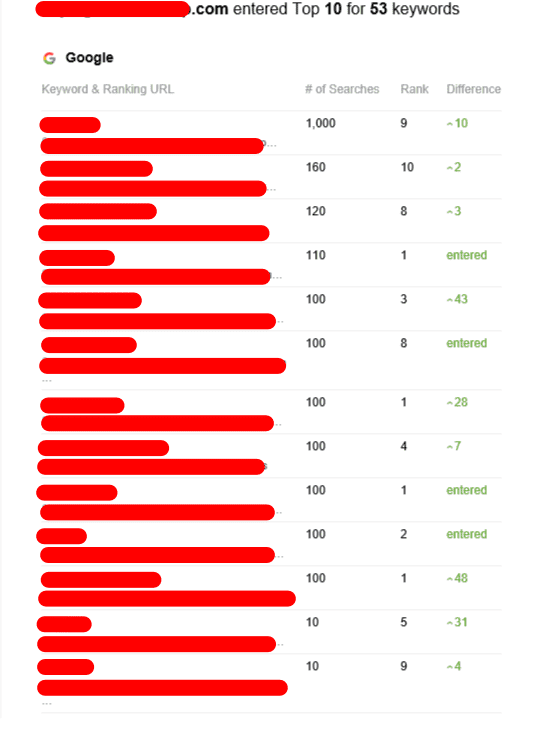Backlink Tier - The Hierarchy of Backlinks That Scale Your SEO Campaign
Backlink tier is the hierarchy of links that you build to boost your SEO campaign. Each level provides an extra layer of protection against Google's penalties.
Tiered link building takes an enormous amount of time and effort to get things right. Google takes weeks to find and analyze new backlinks.
First-Tier Links

The first level of links that connect to your piece of content should be of high-quality dofollow backlinks from reputable websites. These links are referred to as Tier 1 backlinks, and they form the basis of your link-building strategy. They are a sign of trust for your web page, thereby giving it the domain authority needed to be highly ranked on search engine results pages. If, for example, your blog post was published on HubSpot and also included a tier-one link to SearchEngineLand's compilation Link Building Statistics then SearchEngineLand’s ranking on the web will benefit from the link equity that HubSpot gave away.
The second tier can be more diverse and contain low-quality backlinks, like spammy forums, or low-value bookmarking sites and directories. The main objective with Tier 2 is to produce high-quality content that is linked to your first-tier links. This is because quality content will enrich the article the article and won't stand out as something that is added to SEO reasons.
In order to build a successful tiered link building campaign you'll have to invest in the creation of quality content and using tools like RankerX or GSA. However the time and expense spent manually running an effective tiered link building campaign could be worth it in terms of the increased rankings that result from having a well-structured backlink pyramid.
Second-Tier Links
Tiered link building is designed to funnel users through different pages before reaching your website. It's crucial to choose relevant second-tier backlinks sources that are relevant to both your business and website to ensure this happens. Contrary to profile profiles guest blog posts are able to perform very well for this function because they provide content that people want to consume.
In general, avoid using tier 2 links in forums or other low-quality websites. Instead, you should use high-quality pages like industry news or guest posts. These links will look more natural and will have greater impact on your rank in the search results. Additionally, they're more likely to be recognized by Google as having passed link equity, which will increase their ranking value in SERPs.
If you want to increase your SEO rank You should be aware that obtaining these high-quality hyperlinks manually is not easy. It can take months to send guest posts to top-quality publishers and even longer for them to get published. Additionally, it could take weeks to see the outcomes of your efforts when it comes to getting new traffic and online conversions.
Many SEOs utilize automated tools to create second-tier backlinks. This could be in violation of Google's Webmaster Guidelines and could result in being penalized.
Third-Tier Links
This category has a large amount of links, some of which are borderline spammy. They are published on social media platforms as well as on user-generated content sites such as Quora. They help with the indexing of tier two links, but don't give any link equity to the promoted resource. They are typically nofollow links. At this stage, marketers are more focused on quantity rather than quality. tiered backlinks service use tools to share numerous hyperlinks in forums, comments sections of articles and blog posts, in directories, and other similar locations. In this instance tiered link building is a gray zone that is in violation of Google's webmaster guidelines.
Link-building campaigns that are classified require a lot of time and energy to be successful. It could take days or even a month for Google to rank one backlink, and after that it may take months or even weeks to see a significant SEO impact. Marketers should be patient, and implement a well-planned content strategy.
Marketers should also avoid using too many automated tools to achieve this kind of linking. These tools can violate rules for optimizing search engines and lead to penalties. It is best to manually select links and post them on relevant websites for donors instead of using automated systems like GSA or RankerX. This will stop the search engine from penalizing a promotion with low-quality links.
Fourth-Tier Links
Tiered link building is an extremely popular method to increase higher rankings for websites. However since Google has taken significant steps to eradicate "black hat" SEO practices, tiered linking methods have seen a decline.
This is because they're considered to be a gray area in the SEO world, and may be penalized for using them in a way that is unnatural. Tiered links are backlinks constructed on different levels of a link pyramid. The primary purpose of these backlinks is to boost the position of a site promoted in search engine results. This way, the promoted page can rank higher than competitors and receive more organic traffic.
The quality of the backlinks in this tier goes an eminent decline, and they are usually nofollow. This category may also contain low-quality directories, article networks, and social media profiles. These links may be constructed organically or through strategic automation tools. However, they must remain diverse in terms of domains, niches and relevance.
These backlinks, besides being of poor quality and nofollow are also prone to problems when they're not diversified enough. Google has a group of hound dogs that are highly trained and are always looking for patterns and strategies within backlink profiles. If they find them not only could the link-building team be penalized, but also its clients.
